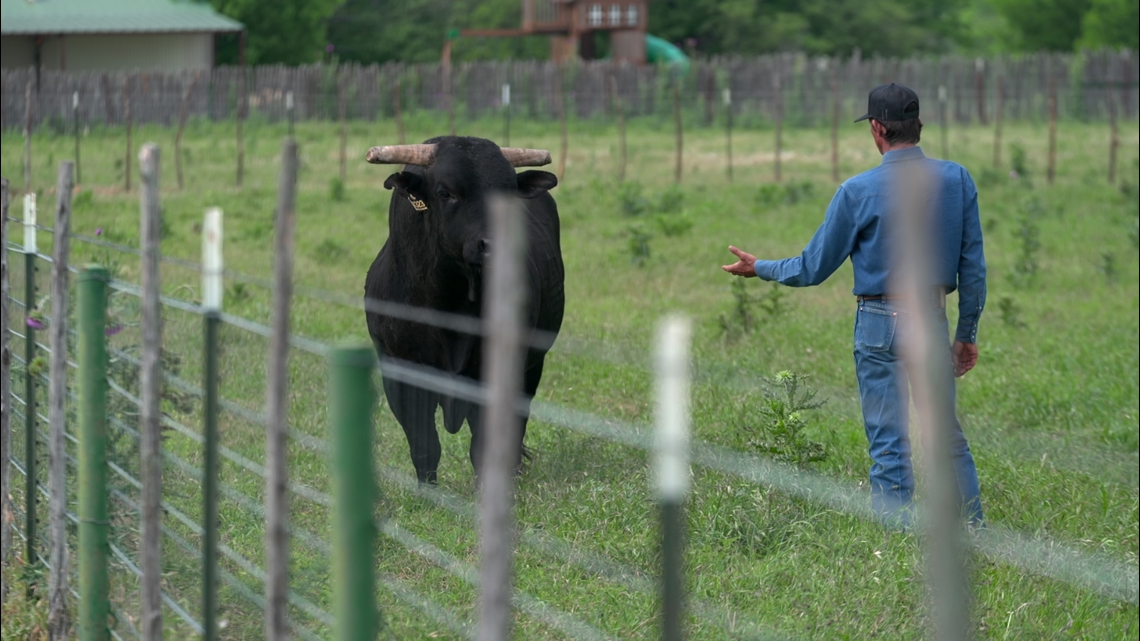The bull riding legend who nearly got himself killed -- and lived to tell about it
J.B. Mauney conquered the toughest bulls in the world. As he prepares to enter the Bull Riding Hall of Fame, he reflects on the injury that made him hang it up.
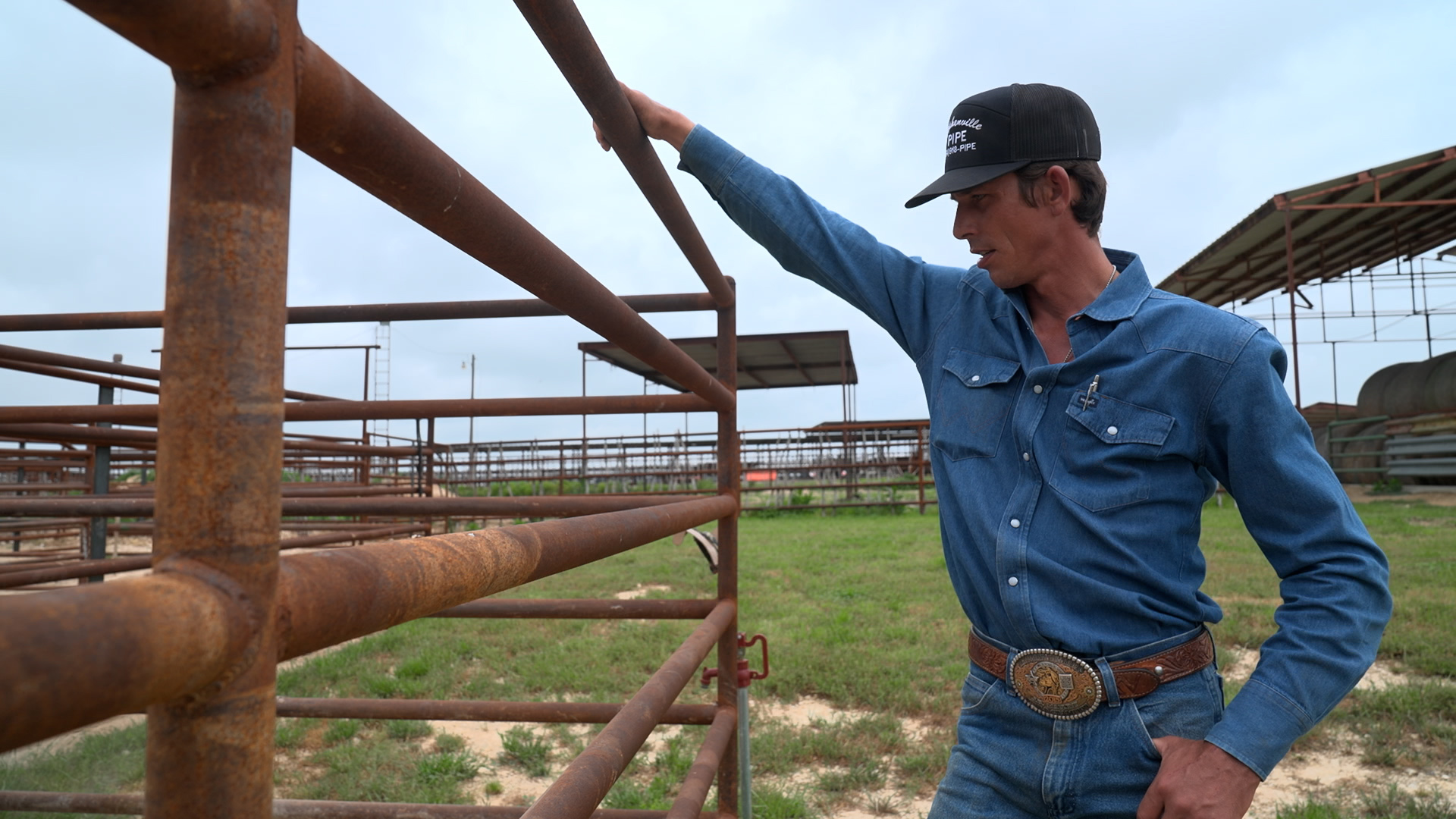
The richest bull rider who ever lived still welds his own fence.
"The s--- you gotta do when you retire..." J.B. Mauney says on a recent Wednesday, grinning in a flame-resistant Wrangler shirt.
Mauney, 37, is standing in a pasture at the XV Ranch, the sprawling property he owns near Stephenville, about 90 minutes southwest of Fort Worth. A two-time world champion, Mauney bought the ranch back when he was still riding bulls. It wasn't a backup plan because Mauney definitely never had one. He just viewed it as his slice of Texas, and it's where he is now: fixing fences, wrangling wayward cattle, loading bucking bulls into chutes and coaching younger riders on the finer points of surviving the most dangerous sport on earth.
Mauney takes off his welder's helmet and replaces it with a trucker cap from a Stephenville pipe supply company.
He begins telling the story of how his career ended.
Chapter 1 An old black bull
It was early last September, and Mauney and his wife and young son were in Ellensburg, Washington, traveling the pro rodeo circuit in their RV. Mauney decided to drive over to Lewiston, Idaho, for the Lewiston Roundup rodeo.
He arrived in Lewiston as beat up as ever -- breaks in his left leg and foot and right ankle -- and he drew an old bull named Arctic Assassin.
He lowered into the chute for his first go-around.
Arctic Assassin spun and kicked out of the gate, and Mauney "sat down on my ass." That mistake, as subtle as it was, knocked his timing out of sync. He started to fall, and then one last kick launched him into a backflip.
"I just round-assed off the thing," Mauney says now, describing a predicament that makes more sense seen than heard.
He landed on the side of his head and rolled onto his knees. When he pushed down to stand up, he felt it: His neck had broken.
"Felt like somebody stuck a hot knife right in the back of my neck," Mauney says. "I'd broke my back before, so I knew. I was like, 'Son of a b----, I just broke my neck."
Mauney continues explaining the rest of it: the trip to the hospital, the surgery, the doctor's orders -- no more bull riding, at the risk of paralysis or death -- and, finally, his decision a week later to retire from bull riding for good.
Then he walks across the front pasture at the XV Ranch, and calls out to an old black bull.
"C'mon, biggun!" Mauney shouts as he kicks over a bucket of feed.
After one more call, Arctic Assassin lumbers over.
Chapter 2 King of the Rank Bulls
That a legendary bull rider would end up owning the bull that ended his career would be surprising -- if that bull rider wasn't J.B. Mauney.
The skinny North Carolina-born cowboy built a career, and a legend, out of being "a cowboy's cowboy," as one of Mauney's pupils Tyler Taylor describes him.
Taylor is a 30-year-old bull rider who works and practices on Mauney's ranch, where the bucking arena has become a bull riding hub known as Bucktown.
The riders who fill Bucktown's pens and chutes can only dream of a career like Mauney's. In over 20 years of riding -- from the time he was 13 until the night he straddled Arctic Assassin -- few riders in history compiled more accolades than Mauney: two Professional Bull Riders (PBR) world titles, 48 event wins on the PBR circuit and more than $7.4 million in career earnings, the most all-time.
All of which is why May is the Month of Mauney in the bull riding world. The PBR will celebrate Mauney's career in a ceremony at its World Finals at AT&T Stadium in Arlington on May 19. That same weekend, the Bull Riding Hall of Fame in Fort Worth will induct Mauney into its 2024 class.


Mauney had announced his retirement shortly before the Hall of Fame's annual ballot deadline; the organization quickly added Mauney to the ballot, and he polled more votes than anyone else, says Bill Putnam, the Hall of Fame's co-founder.
But the pomp and circumstance surrounding the end of Mauney's career goes beyond the world titles, wins and the money.
Perhaps no bull rider in history built a more larger-than-life appeal than Mauney, who smoked Marlboro Reds, ditched the standard masked helmet and rode in his cowboy hat, while carrying a reputation for picking, and conquering, the toughest bulls in rodeo.
"He's had this aura about him," Taylor says. "But he's just a down-to-earth cowboy. He'll rope cattle, help you catch a wild bull out in the brush. I always make the joke: He's just the richest redneck I know."
Taylor grew up watching Mauney, dating back to when Taylor was in middle school and Mauney was in his early 20s. Mauney quickly became one of the best bull riders in the world. And the most famous, too.
Then Taylor grew up and became a pro bull rider himself. One year at the Fort Worth Stock Show and Rodeo, he ran into Mauney. The $7 million bull rider was smoking a cigarette. Taylor decided to have one with him.
"I said 'I'm gonna rip a cig with J.B. Mauney,'" Taylor remembers. "How many times do you get do that?"
Taylor saw Mauney again in Nacogdoches, down in East Texas, and Mauney mentioned needing some fence-welding work done on his new ranch in Stephenville. Taylor had experience in just that, so he got hired on at the XV, where the two built the bucking chutes and pens that eventually became Bucktown.
Along the way, Taylor got a chance to know the famed bull rider up close. The toughness was never a front, Taylor says.
"He just outworked a lot of guys," Taylor says of his friend and mentor, "just beating himself to death out there."
Mauney grew a singular tough-as-nails reputation as a bull-rider -- no small task in a sport filled with gritty cowboys. Part of that came from his penchant for battling the "rankest" bulls, a rodeo term to describe the best of the best. Sometimes the draw was random. Other times, in certain PBR formats, riders had a chance to draft the bull they rode. Mauney often veered toward the rank end of the chutes.
"If somebody showed up with a bull they nobody could ride," Mauney says, raising his hand, "let me pick that one."
That's how he kept finding a bull named Bushwacker.

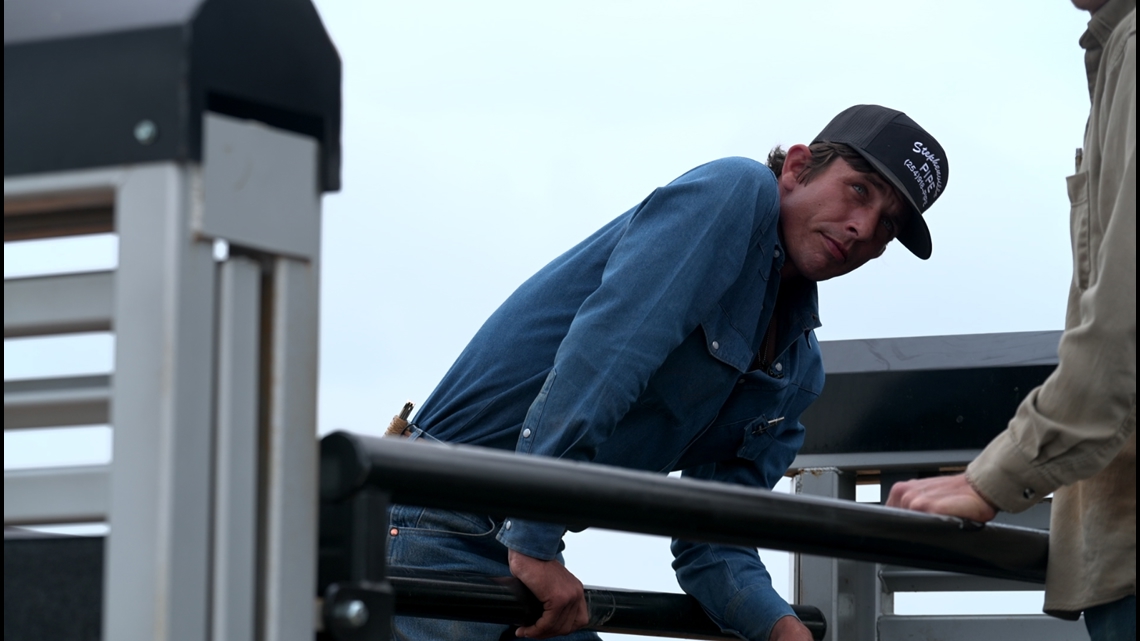
Chapter 3 Mauney vs. Bushwacker
The 1,700-pound California-born bull Bushwacker dominated the PBR of the early 2010s, winning world championships (yes, the bulls compete for titles too) in 2011, 2013 and 2014. During that span, Bushwacker put together a streak of 42 consecutive buckoffs in PBR events, meaning no rider could manage hold on for the necessary eight seconds to get a score from judges.
Mauney himself had tried and failed and tried again on Bushwacker, 12 times in all.
Then at an event in Tulsa, in July 2013, Mauney met Bushwacker one more time.
He once more lowered himself into the chute, where Bushwacker waited as calm as ever.
"He stands like a show steer in there," Mauney says. "And you know he's getting ready to buck his ass off."
The gate opened, and Bushwacker kicked and jumped, with Mauney riding him in step like a dance partner. As the clock neared eight seconds, Bushwacker gave one last hard jump and kick to his left, sending Mauney over the side.
But Mauney made it to the eight-second mark before his head hit the ground, sending the crowd into a frenzy.
Mauney pulled himself up, ran to a chute, climbed the railing and threw his cowboy hat up in the air in celebration.
"I finally got him rode," he told the CBS Sports broadcast of that iconic ride.
Mauney had a run of picking bulls he thought he could win on, he told the broadcast. Then he decided to "go back to picking rank," the toughest bulls he could get.
That's how he got Bushwacker.

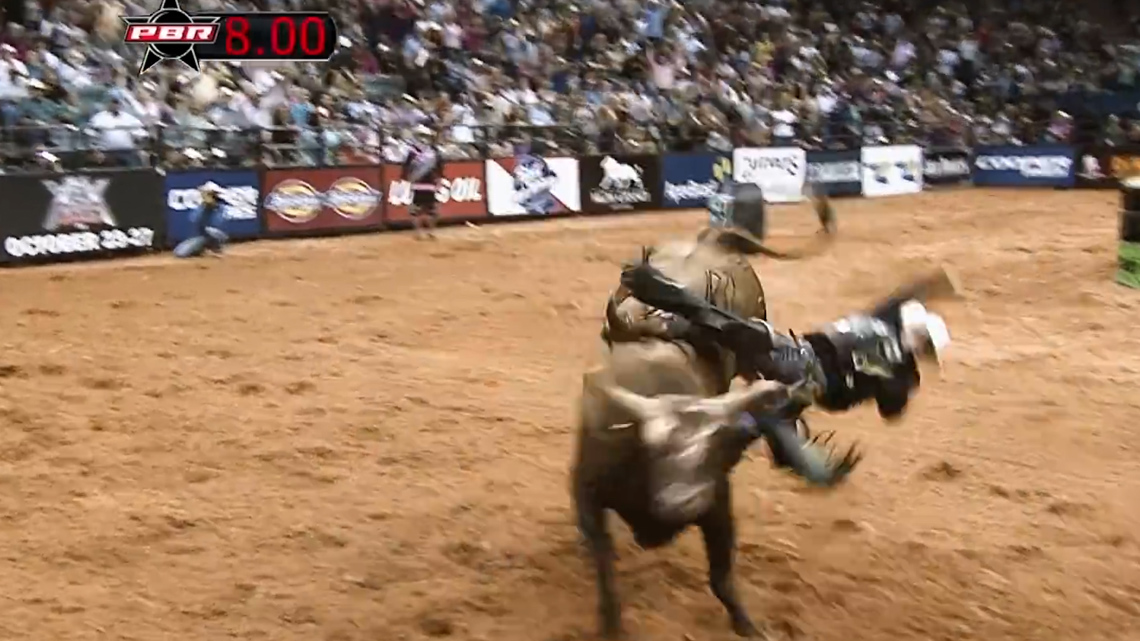
Chapter 4 'Play the game, take the pain'
If the Bushwacker ride didn't seal Mauney's status, the world title he won later that season, and again in 2015, surely did.
Mauney just kept riding and earning gobs of money. In 2018, Vice Sports featured Mauney in a video piece titled, "The greatest bull rider of all time." The video has since racked up 12 million views on YouTube, placing Mauney front and center as the face of an entire sport.
The skinny cowboy had become a star, and he earned the endorsement deals to prove it: Monster Energy, Wrangler and Kubota farm equipment all inked sponsorship deals with Mauney, who has more than a million followers on social media.
But none of that added star power made him any more immune to injuries.
Mauney knew the risks of his sport from the time he was a kid. He grew up in North Carolina, where his dad competed in amateur steer wrestling events. Mauney himself drifted to the sheep, where kids rode them in an event called mutton busting. He was 13 when he first got onto a bull.
"My dad always told me, 'All you're doing is tearing up your body,'" Mauney says. "He told me, 'You play the game, you take the pain.' And I lived by that my whole life."
Mauney hit the North Carolina rodeo circuit and bounced around day jobs, including a stint at a McDonald's. When he was around 19, he worked in a ball-bearing plant, leaving a windowless factory covered in grease every day. Then he got a call from the PBR: They had an alternate spot open at an event in Portland, Oregon.
Mauney didn't just let opportunity knock. He flew out west, took second place and pocketed $14,000.
He didn't go back to the ball-bearing plant after that.

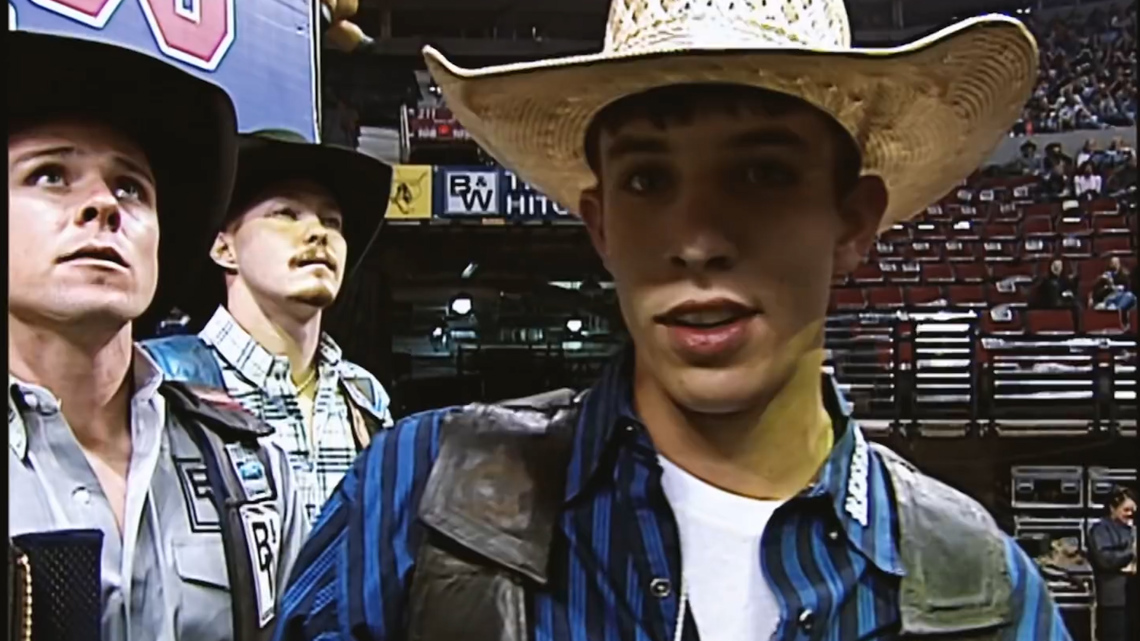
Chapter 5 Alive and upright, if only barely
Still, as his career went on, the injuries piled up faster than the accolades. And they never stopped.
Broken ribs, a lacerated liver, bruised kidneys and spleen, a broken jaw (on both sides), a broken eye socket, missing teeth, screws in his hand and shoulder, blown-out knees, a ripped groin muscle.
He'll need a hip replacement one day -- maybe in a decade, if not sooner. He gets around OK most days, except for the days he doesn't, when his battered bones and tendons make him feel "about 98."
"Everybody said, 'What are you going to do when you're so old and you can't get out of bed and [you're] crippled up?'" Mauney says. "I said, 'I guess I'll just lay there and think about all the good times I had.' Because I'm 37 now, and I've done more in my life than most people ever get to do or see, and had a blast doing it."

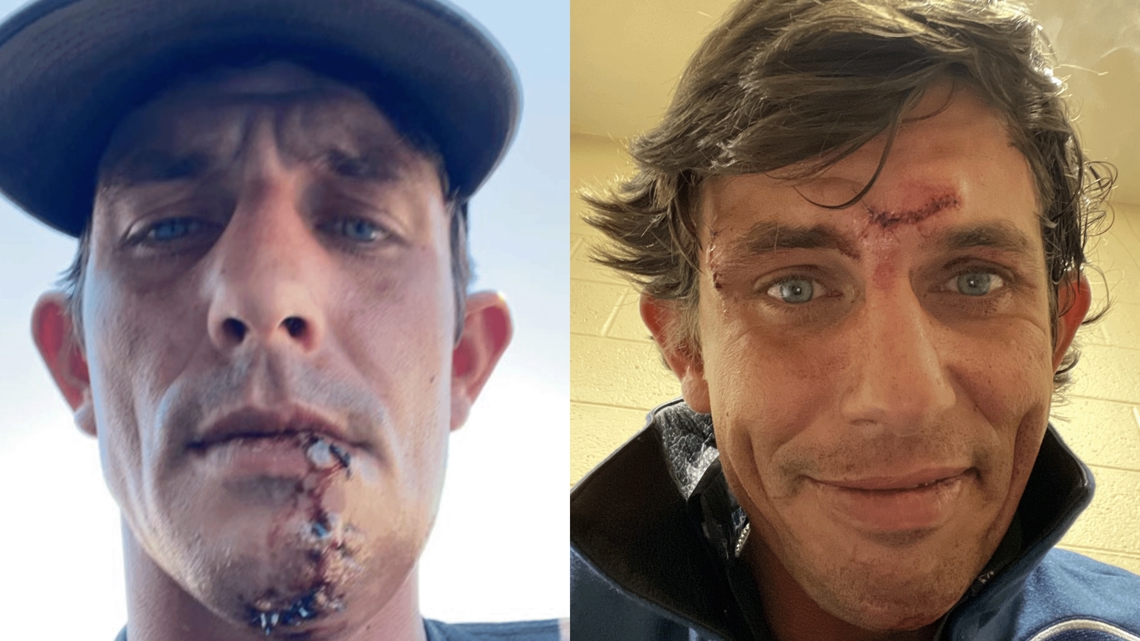
Mauney mostly feels fortunate his career way it ended the way it did.
He's alive and upright -- two outcomes that aren't always certain if an injury breaks a certain way.
After Arctic Assassin bucked him off in Idaho, Mauney could feel the break in his neck. But he managed to get to his feet and walk out of the arena.
At first, the on-site medical crew wasn't sure what happened. Then they scrambled to get him in a neck brace and get him ready for an ambulance ride to the hospital.
Another cowboy checked on Mauney as he awaited that ambulance, and asked if he needed anything.
Mauney said no.
"How 'bout a cigarette?" his friend offered.
Mauney took him there, figuring they wouldn't let him have one at the hospital.
"I have my neck brace on, they're trying to start the IV in my arm," Mauney recalls, "and I'm just burning one down."
At the hospital, he underwent surgery to fix the break, and his doctor gave him two clear-cut outcomes for the next time he fell off a bull and hit his head.
Death or paralysis.
The damage to his vertebrae would heal -- and it did -- but that didn't mean he'd be in any shape to get tossed from a bull again.
Mauney knew it was time.
"It was always going to happen like this," Mauney says. "I knew that. Something was going to have to happen where they had to tell me that I couldn't ride anymore. Because the way I went about my whole career was 'never quit.' I'd have never been able to tell myself I couldn't do it."
Mauney says he ran out of chances just in time.
"That's the thing about bull riding," Mauney says. "They say it's a game of inches. They step on you the right way, it don't matter how much protective s--- you got on, you're dead. That's why I always told everybody, 'I'm like a cat. I got nine lives. I just used about 18 of them.'"
When Mauney announced his retirement, his place in bull riding lore was already set.
"We knew before J.B. even announced his retirement that he would be a first ballot Hall of Famer," says Putnam, the Bull Riding Hall of Fame co-founder. "There's never been a greater rank bull rider than J.B. Mauney."

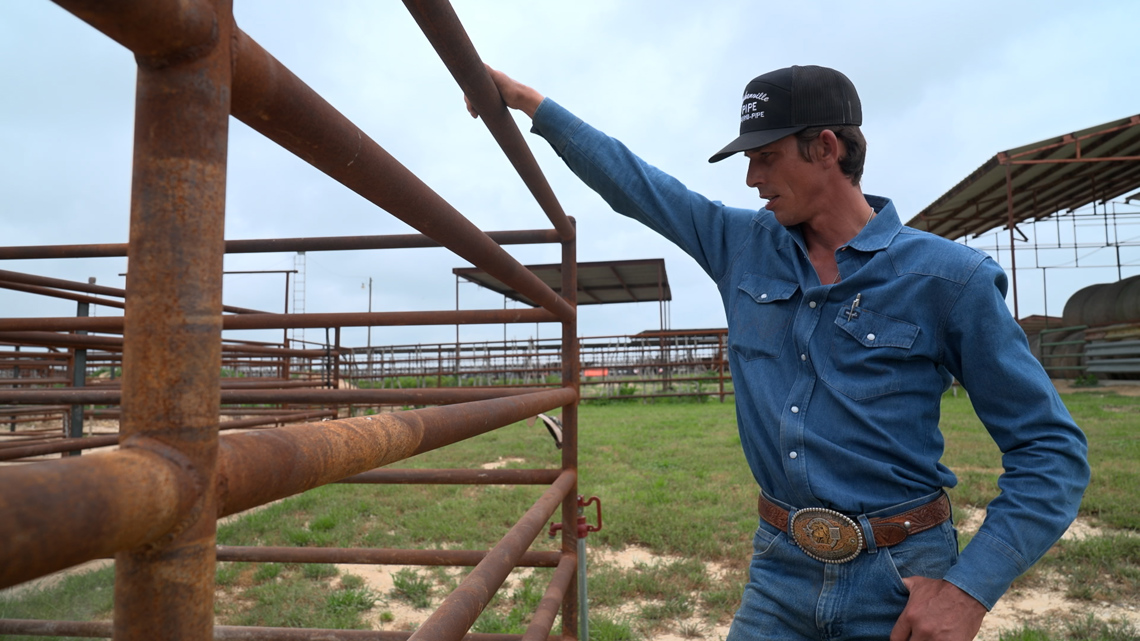
Chapter 6 What he knows best
At the XV Ranch, Eric Edelman drops into a bucking chute and straddles a practice bull named Snack Pack.
Edelman is another XV ranch hand chasing the bull riding dream. He grew up in Illinois, but found his way to Mauney's ranch after sending a video to the rodeo social media personality Dale Brisby that showed he could also weld. The video made its way to Mauney, who gave Edelman a chance to come work and learn under his watch.
In the bucking chutes, Edelman tightens his rope and gives a nod. This signals to Mauney, standing on the other side of the gate, to pull it open.
With Edelman in tow, Snack Pack whips out of the chute.
"Track him now!" Mauney yells. "Sit up! Shove your hips! Shove your hips!"
Edelman rides well for about five seconds -- until Snack Pack circles back toward the chute and slams Edelman into a gate. Another buck, and Edelman flies off.
"Quit leaning forward," Mauney tells Edelman afterward. "That's why your ass keeps sliding back off your rope."

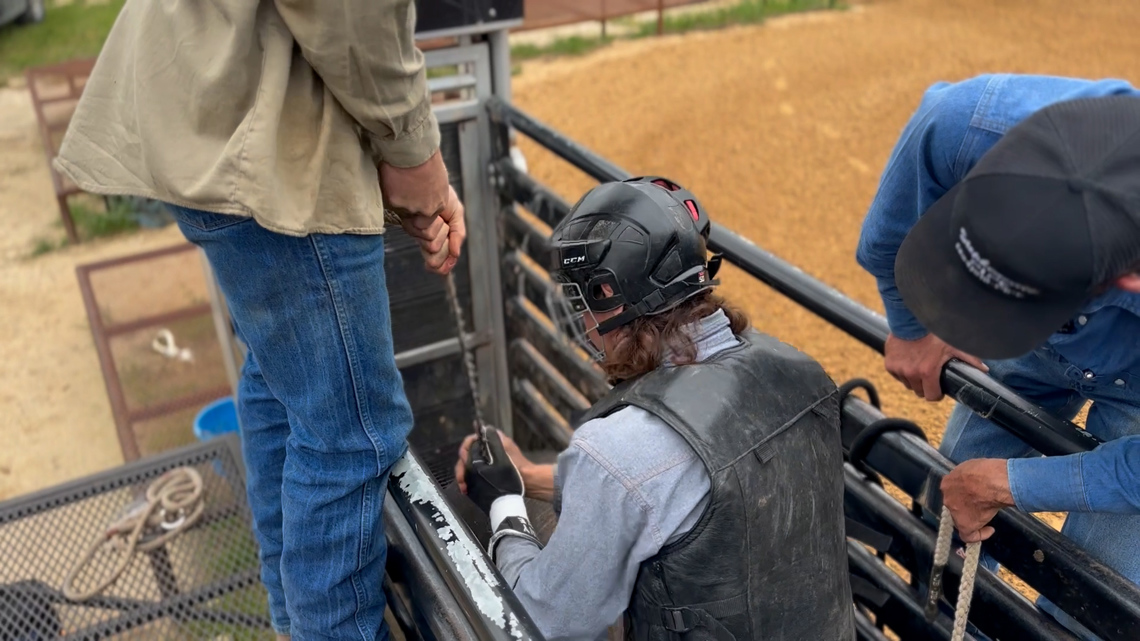
This is the second phase of J.B. Mauney and bull riding: coaching.
He signed on as the head coach of the Oklahoma Wildcatters, a new franchise in the PBR's team riding format. With the Wildcatters, Mauney will coach some of the top-ranked riders in the world. At Bucktown, he works with riders like Edelman and Taylor, who are trying to launch their careers to the next level.
All of it keeps Mauney around what he knows best, and likes the best: bulls.
He might try breeding them at the XV, he says. But doesn't have a burning desire to land one of them in the PBR. If that happens, he says, then it happens.
"If you wanna be a millionaire in this business [of breeding bulls]," Mauney says, "you better start out a billionaire."
For now, he's fine just being around bulls and bucking.
On the XV's front pasture, Mauney stands to the side of Arctic Assassin and pets the hulking beast like a dog. The same bull that ended the toughest cowboy's career now likes a nice scratch on the back.
Arctic Assassin's previous owner, Matt Scharping, was going to retire the bull from riding after last season. Mauney, who knows Scharping, figured he had just the place for Arctic Assassin to live out his days.
"Like a big dog," Mauney says. "He had a job to do. I just didn't do my job."
Before long, Arctic Assassin gets enough scratching, and he wanders back across the pasture. The next time a visitor pulls up to the gate here, they'll see him -- the first and last bull to ever get the best of J.B. Mauney.
"He retired me," Mauney says. "Now he gets to retire with me."

